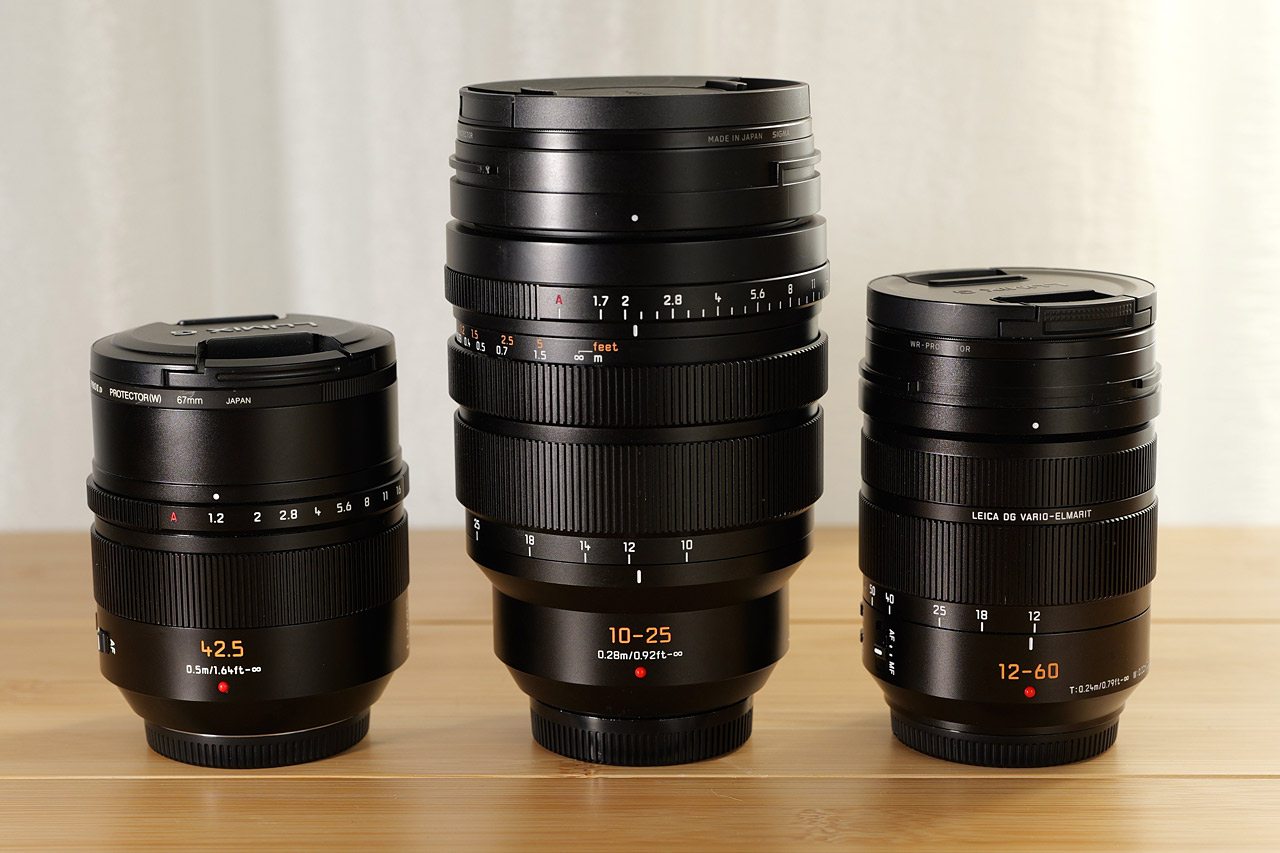
Introduction to the LUMIX G99II
The previous model, the LUMIX G99D, was released in October 2022 and sadly discontinued in June 2024, less than two years after the original release. I’m sure many people were surprised by the sudden announcement of the successor to the G99, the LUMIX G99II. Looking at the specs, although there have been some minor flash improvements from the G99D, there have been no major changes, and I have seen many comments on social media saying, “Considering it has the “Mark II” name…”
However, on the other hand, it is also true that there were many people who expected it to be a successor to the LUMIX G99, which was a masterpiece.
In this article, I would like to share with you my impressions of using the LUMIX G99II.
LUMIX G99II Specs and Features


- 4/3-inch CMOS sensor
- Effective pixels: Approximately 20.3 million pixels
- Image stabilization: 5-axis 5.0-stop Dual IS2
- ISO: 100-25600
- AF system: Contrast AF
- Focus points: 49 points
- Shooting speed: Approx. 9 frames per second (AFS, MF) / Approx. 6 frames per second (AFF, AFC)
- Number of shots: RAW+JPEG Continuous shooting: 27 or more frames
- Viewfinder: 0.39-inch, 2.36 million dots, organic EL (OLED), approx. 1.48x
- Monitor: Approximately 1.84 million dots Organic EL (OLED)
- Video: 4K: 3840 x 2160 (4K/30p: approx. 100Mbps)
- Interface: USB Type-C (USB charging/power supply compatible) micro HDMI Type D
- Weight: Approx. 530g (including battery and card)
- Dust and water resistant
- Estimated market price: Around 99,000 yen (tax included)
Changes that can be seen from the spec sheet from the previous G99D
- USB typeB to typeC
- Live MOS Sensor to CMOS Sensor
- From Supersonic Wave Filter (SSWF) to Sensor Shift Type
- From Bluetooth 4.2 to 5.0
- Rear LCD screen has been increased from 3.0-inch 1.04 million dots to 1.84 million dots
- Mode dial design from C1 C2 to C S&Q

G99II Body Design
There are no major changes in this model change. That said, there are some points of concern, such as the sensor being changed from a Live MOS sensor to a CMOS sensor, but when actually using it, the image quality is as good as the higher-end model “G9PROII”, and the battery consumption is better than the specs suggest.
The body design is the standard LUMIX triple button design, and the operation is consistent with higher-end models, so it immediately felt familiar in the hand. Although the body is marketed as being small and lightweight, when I held it in my hand, my little finger did not extend beyond the grip, which left a good impression. I would like to give my stamp of approval to this model, which is well-made with the uncompromising craftsmanship that is characteristic of LUMIX.

I think the most noticeable improvement from the previous G99D is the adoption of USB-C. Since I don’t use anything other than USB-C these days, this change is quietly appreciated.

Shift in dust prevention systems
Although I don’t think the manufacturer intended to make this worse, I was disappointed that they changed the non-dust system from a Super Sonic Wave Filter (SSWF) to a sensor-shift type. LUMIX has not adopted the SSWF at all in recent years, but I would have liked them to have adopted it, especially since this is an entry-level model aimed at beginners. Experts are able to notice when the sensor is dirty and know how to remove it. However, for a tool for beginners, I think an SSWF, which is relatively easy to remove dust from the sensor, would have been preferable.
If there is a reason why SSWF cannot be adopted for LUMIX cameras, I hope that manufacturers will develop a new non-dust system to replace SSWF.
Another disappointing point is that the “LUMIX Lab” app is not supported. LUMIX Lab is a recently released official app for LUMIX, and with recent LUMIX cameras, you can smoothly send photos to your smartphone and change the color of photos transferred to your smartphone, but the G99II does not support this app.
When we checked with the manufacturer, we were told that there are no plans to make it compatible in the future, so if you are planning to link it with this app, please check the compatible models before purchasing. However, the compatible app has been changed from “Panasonic Image App” to “LUMIX Sync”.
High-magnification zoom lens kit


*Click on the image to enlarge.
The G99II will be sold as a lens kit with the “LUMIX G VARIO 14-140mm F3.5-5.6 II ASPH. POWER OIS” as a set, called the LUMIX DC-G99M2H. It can be purchased for an additional 40,000 yen for the body alone, but considering that the market price of this lens is about 69,000 yen, it is a very good deal.
This was my first time using this lens, but it’s small and lightweight, and works very well with the G99II body. The strength of Micro Four Thirds is that it can produce a 10x zoom lens with a 35mm equivalent of 28mm to 280mm in this size. With just this one lens, you can take almost anything. The images also showed a good sense of resolution considering it’s a 10x zoom. I would definitely recommend this to anyone considering buying one to get started with photography.
Lenses recommended for use with this product

Although the kit lens is an excellent lens, here are three recommended lenses for use with Micro Four Thirds cameras.
LEICA DG VARIO-ELMARIT 12-60mm/F2.8-4.0 ASPH./POWER OIS
Although the zoom ratio is smaller than the 14-140mm kit lens, it has a sufficient zoom range of 24-120mm in 35mm equivalent, and is a relatively bright lens with F2.8-4.0. The lens I recommend this time is a “LEICA” lens, so it takes very good pictures. I would like to own this lens as a standard zoom lens for those who care about image quality.
LEICA DG VARIO-SUMMILUX 10-25mm/F1.7 ASPH.
Although the zoom range is even smaller, at 20-50mm in 35mm equivalent, it produces brightness comparable to that of a prime lens with F1.7 and beautiful bokeh. It is expensive, but if you think of it as the equivalent of two prime lenses, it is well worth it.
LEICA DG NOCTICRON 42.5mm/F1.2 ASPH./POWER OIS
This is the lens I highly recommend. It’s no exaggeration to say that I continue to use Micro Four Thirds because of this lens. Not only is it bright at F1.2, but it also has a high level of depiction that captures the atmosphere, making it an excellent lens that will impress you no matter what you shoot.
These lenses are very good lenses that cover up to medium telephoto. After learning to shoot with a kit lens, remember them when you want to take pictures that make use of more subtle bokeh. Also, if you need a telephoto lens to photograph trains, children’s sports days, airplanes, etc., there are also super telephoto zoom lenses that can be used handheld up to 1600mm. If that’s the case, check them out.

Built-in flash

When you hear the word “strobe,” most people probably think of it as a light that illuminates the subject in a dark place. That’s true, but even on a bright day, you might need to use a strobe if the subject is backlit. A strobe is a very important accessory for a camera.
However, higher-end models do not come with a built-in flash. In the case of high-end LUMIX models, the upper part of the camera where the built-in flash is mounted is often used for other purposes such as sensors or cooling fans, so perhaps the manufacturer is hoping that customers will pay tens of thousands of yen to buy it as an add-on.
This is included with the entry-level model, and considering that the market price of the camera body is around 99,000 yen and includes a flash, it feels like a great value for the money.
If you start using a camera with the G99II, I would like you to try using a flash first. Whether you are taking pictures in the dark or removing shadows in a bright place, use the flash in any way you can think of. You will be able to take photos you never imagined. I think that experience will be a great asset when you switch to a higher-end model in a few years.
I would recommend the LUMIX G99II to the following people
If you’ve read this far, you’ve probably already got a general idea, but I would recommend this camera to beginners who are just starting to get started with photography.
I think the G99II is a cost-effective camera with more than enough performance for beginners. On the other hand, it may be a little disappointing for those who have used mid-range or higher models of Lumix.
There are only a few physical buttons, including the thumb AF button, and no real-time LUT, so there is no limit to the luxuries that can be made. However, I had no complaints about using this camera. I think I could simply enjoy the act of taking pictures.
I think people who are thinking of getting this camera want to have the experience of taking pictures using a tool called a camera, something they couldn’t get with a smartphone. There are probably many reasons for this, such as a new hobby or keeping a family record, but I think the LUMIX G99II is a camera that can fulfill that role.
However, if you want to take pictures of moving objects such as sports, cars, and trains, I recommend the higher-end model G9PROII, and if you want to take videos of those objects, I recommend the GH7.
These two cameras use image plane phase difference AF for autofocus, which is more effective for moving subjects (I should add that the contrast AF used in the G99II is also a sufficiently high-performance autofocus). Whether you are a beginner or an advanced photographer, you need a high-performance camera for shooting in difficult conditions.
LUMIX G99II Review Summary
Having the opportunity to try out the G99II gave me an opportunity to reconsider what a camera really is.
At first, I was disappointed with the G99II, whose specs were almost the same as the old model, but as I used it, I realized that there was no need to change because it was a sufficient camera. The manufacturer’s target audience was “people who will be using cameras for the first time.”
This camera shows the manufacturer’s strong desire to provide a model that meets the needs of such people and has high cost performance. If you are considering purchasing the G99II after reading this article, I would encourage you to try the actual camera. I’m sure you will enjoy taking photos.
Originally written in Japanese by Akiakane
Born in 1977. In addition to his day job, he has been posting videos and product reviews on YouTube since 2020.
In recent years, he has been working as a salaried videographer, producing corporate VPs and taking on video production and distribution work at the request of local governments as a side job.











